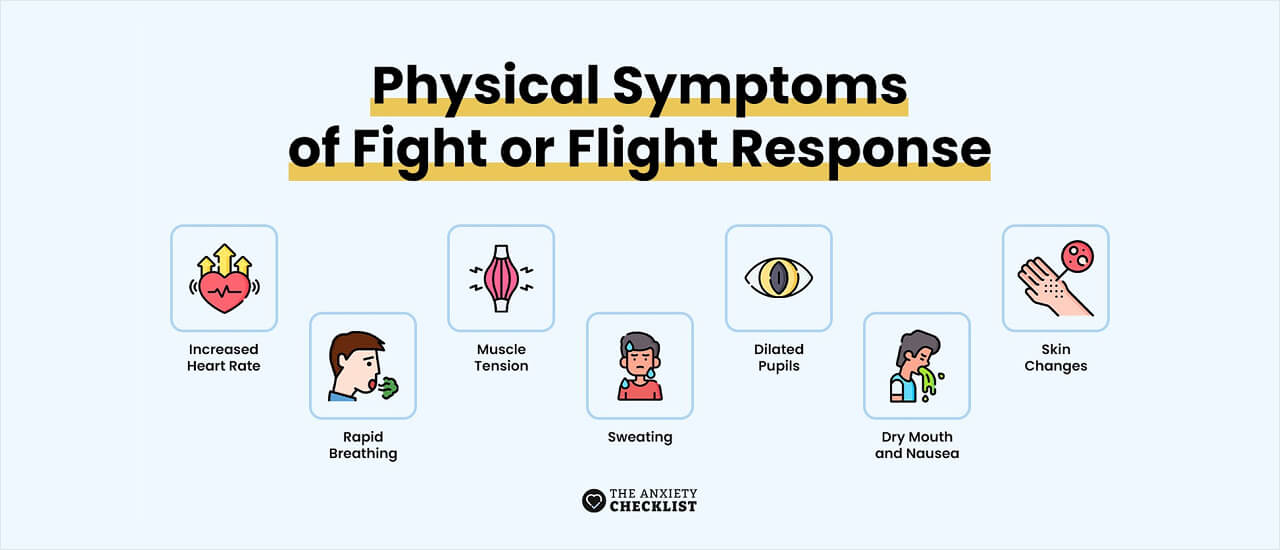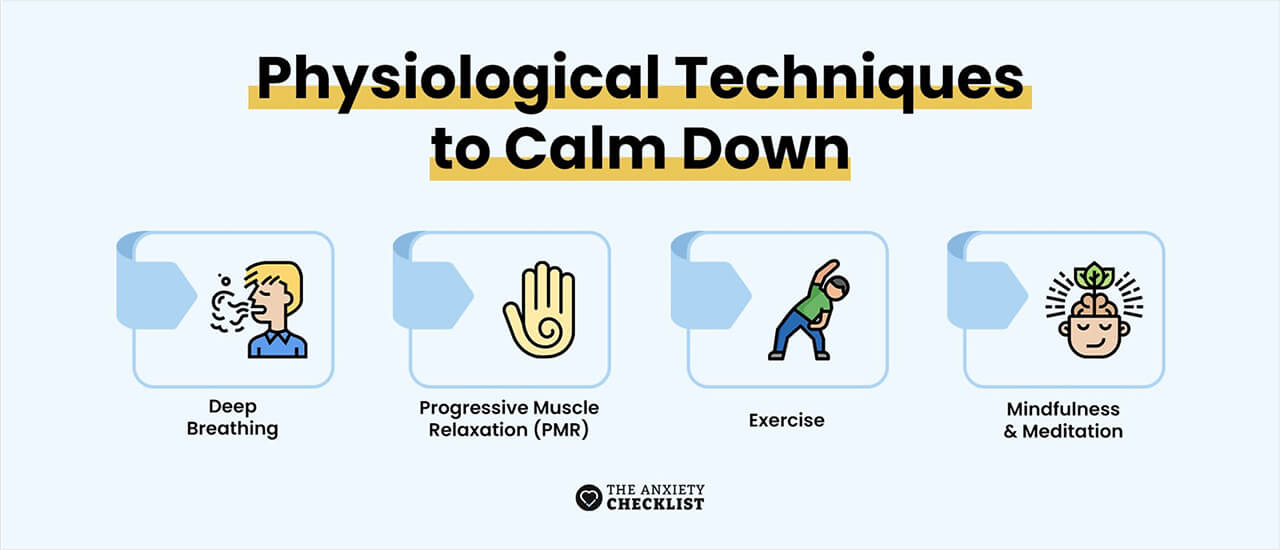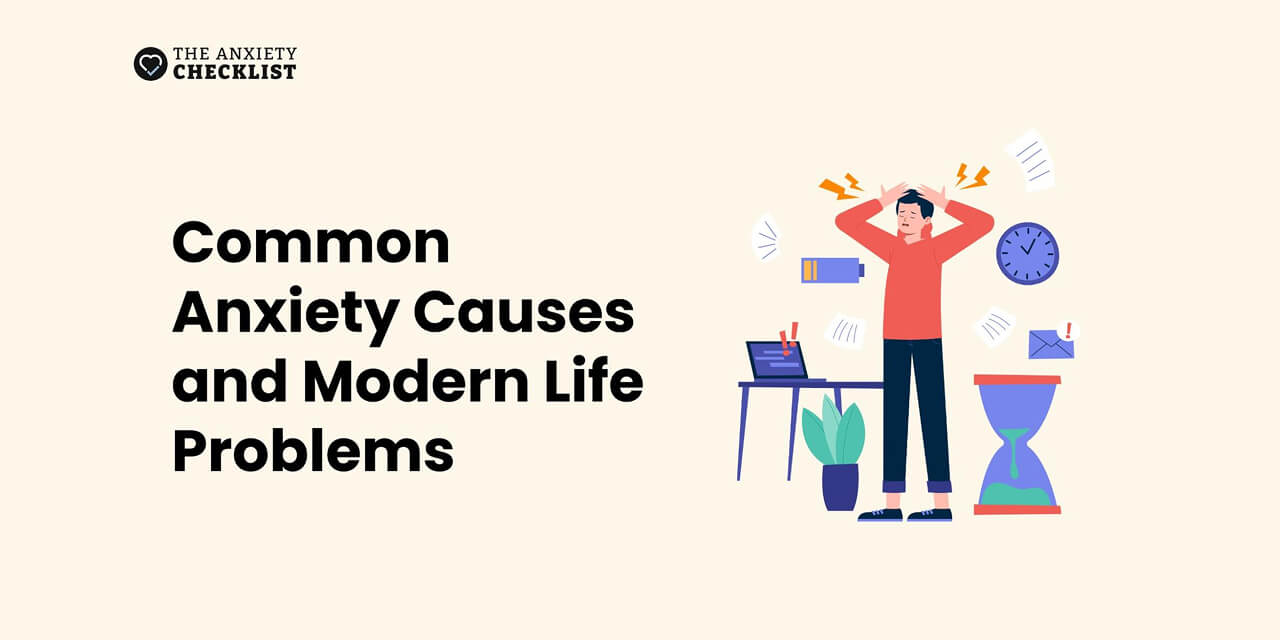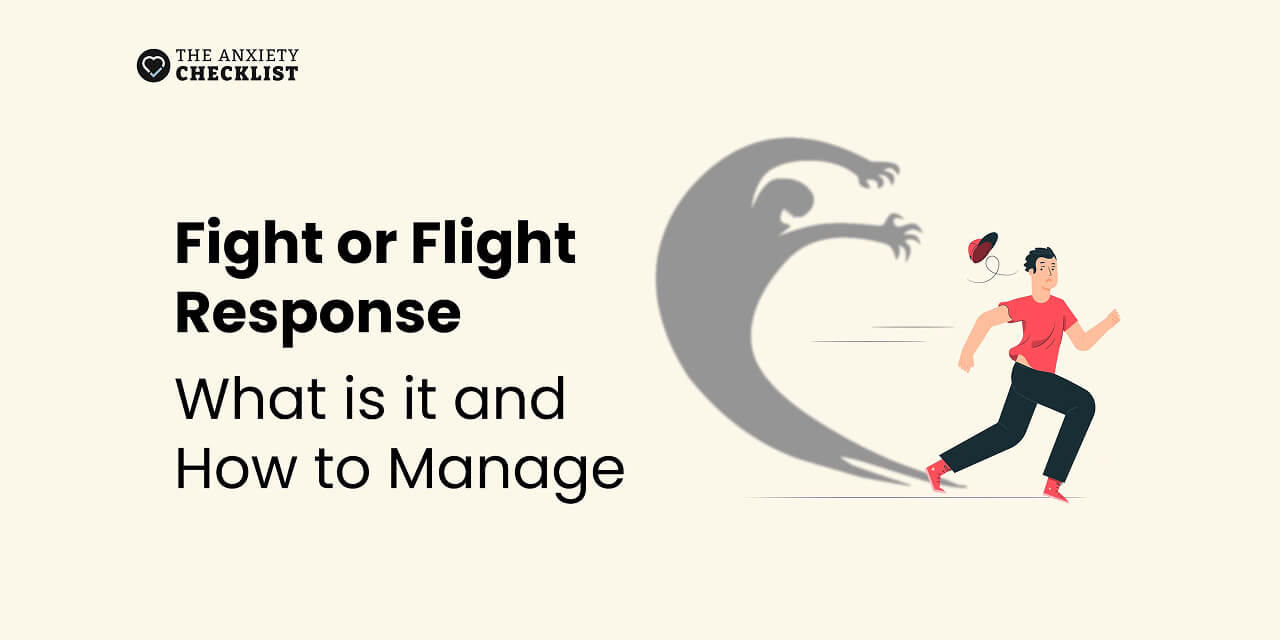What Is the Fight or Flight Response?
Is anxiety holding you back from the life you deserve?
What Are the Physical Symptoms of the Fight or Flight Response?

The fight or flight response triggers several physical changes to prepare your body for immediate action. Here are some of the symptoms you may experience:
The Escalation of the Fight or Flight Response
The fight or flight response isn’t always quick. When it lasts too long, it can amplify stress and anxiety disorders like panic attacks. It can even contribute to adrenal fatigue.
Stages of the Stress Response

To understand how your fight or flight response unfolds, let’s break down the five key stages of the body’s stress response.
Stage 1: Recognition
The first stage is when your body and brain become aware of a demand or change in your environment, whether it’s something small like a phone ringing or something unexpected like a sudden loud noise. This is the starting point for the fight or flight response.
Stage 2: Appraisal
This stage is about mentally evaluating whether the situation is stressful, and if so, how you can handle it.
The process typically happens in two parts:
Two people can face the same situation that triggers their fight or flight response. However, their reactions can differ depending on how they interpret and cope with the situation.
Stage 3: Mobilization
This isn’t the stage where you fight or flee. Rather, during this stage, your body prepares to take action.
If your brain perceives the situation as a threat, the fight or flight response is ready to kick in. The sympathetic nervous system activates the HPA axis — your body’s stress command center — releasing cortisol, adrenaline, and noradrenaline.
These chemicals sharpen focus, speed up heart rate, and reroute energy to your muscles and brain.
Stage 4: Response
This is when your body turns all that built-up energy from mobilization into the actual fight or flight response.
Racing from task to task without a pause keeps your stress levels high and your mind on overdrive.
It’s your body’s way of protecting you by either confronting the threat head-on (fight) or escaping it (flight). There are times when you might freeze instead, unable to react.
Stage 5: Return
Once the threat has passed, your body begins to power down the fight or flight response. The PNS steps in to slow your heart rate, relax muscles, and restart functions like digestion, helping you recover from fight or flight anxiety.
It’s your body’s way of protecting you by either confronting the threat head-on (fight) or escaping it (flight). There are times when you might freeze instead, unable to react.
Pathway to Panic Attacks
A panic attack usually starts with a small trigger—maybe a stressful thought, a bit of overthinking, a weird body sensation, or even just feeling "off."
Your brain, especially a part called the amygdala, misreads this as danger. It hits the panic button, and suddenly your body floods with adrenaline, like you're being chased by something—even if you're just sitting on the couch.
Your heart races, your breathing changes, your chest might feel tight. And then your mind notices all this and starts to spiral: “What’s happening? Am I okay?” It starts giving cognitive distortions and confuses your feelings that make you feel trapped.
That fear feeds more panic, and it snowballs from there!
It’s not that you're actually in danger—your brain is just being overly protective. It's a false alarm, but it feels real.
Full-Blown Panic Attack
Once the pathway gets triggered, it feels like your fight or flight response is stuck in overdrive. Intense waves of fear hit suddenly, making you feel like you’re losing control.
Physical symptoms like a pounding heart, shortness of breath, dizziness, and chest tightness hit randomly. This could last around 10 minutes and usually subside within 30 minutes as the fight or flight response gradually decreases.
While panic attacks are brief, some people experience multiple episodes or lingering fight or flight anxiety symptoms afterward.
This ongoing state can make it feel as though the panic attack never fully ends. This can develop into a panic disorder — a form of anxiety disorder that usually requires professional intervention.
Adrenal Fatigue
The term Adrenal fatigue is often used when someone feels constantly tired, can’t sleep well, and craves salty or sugary foods.
Since, the fight or flight response is controlled by your adrenal glands, these glands release adrenaline and cortisol, your body’s "get ready to act" hormones, when you’re stressed
Now, if you’re constantly stressed and your fight or flight system keeps getting triggered, your adrenal glands are basically always "on."
Over time, some people believe this can lead to a state where your body just feels drained, sluggish, and out of balance.
While these symptoms are real, medical experts don’t recognize adrenal fatigue as a formal diagnosis due to a lack of scientific evidence.
However, prolonged activation of the fight or flight response by constant stress or burnout can lead to feeling drained. It is often a sign that your body needs rest.
How to Manage the Fight or Flight Response
We need our fight or flight response; however, if we notice our body reacting like it’s always in survival mode, we can train it to slow down and regain balance.
Physiological Techniques

Start with the body to interrupt an uncontrolled fight or flight response:
1. Deep Breathing
One of the fastest ways to downregulate the fight or flight stress response is through slow, intentional breathing, particularly diaphragmatic breathing.
This can significantly reduce cortisol levels and activate the PNS, which helps the body calm down. For example, if you feel yourself entering the fight or flight mode, inhale for four seconds and exhale for six.
2. Progressive Muscle Relaxation (PMR)
When you're chronically tense, your body forgets what relaxed even feels like. PMR helps retrain that baseline.
By intentionally tensing and then releasing one muscle group at a time, you teach your nervous system that relaxing in fight or flight mode is possible.
It’s especially useful if you feel “on edge” or hyper-alert even at rest. Just 10 minutes a day helps reduce fight or flight anxiety symptoms.
3. Exercise
This helps metabolize stress hormones like adrenaline and cortisol, restoring biochemical balance. A brisk 20-minute walk can reduce symptoms of fight or flight anxiety and depression.
4. Mindfulness & Meditation
This is about bringing your attention back to the present. Regular mindfulness and meditation practices can decrease amygdala activity (the brain’s fear center) and improve emotional regulation.
Try the following techniques to regulate your fight or flight stress response:
Psychological & Social Support
Regulating the fight or flight response also involves your thoughts, environment, and relationships. Here’s how to strengthen psychological resilience against chronic fight or flight stress response:
1. Build a Strong Social Support System
A meaningful connection signals safety to the brain, helping dial down the fight or flight response.
Having even one person you can talk to, without them judging you or trying to fix you, can ease your fight or flight stress response significantly.
2. Use Cognitive Reframing Techniques
This involves challenging and reshaping automatic, stress-fueled thoughts intentionally.
For example, instead of “I’m failing,” reframing to “This is a tough phase, not a final result” helps calm the fight or flight response and promotes mental flexibility.
3. Develop Self-awareness of Stress Triggers
Daily habits, such as excessive caffeine intake, doom-scrolling, or overstimulation, can unintentionally activate the fight or flight response.
Identifying your triggers allows you to make small changes that prevent chronic fight or flight anxiety.
Long-Term Strategies & Lifestyle Change
Here are a few lifestyle changes you can start today to effectively manage your fight or flight response:
This acute stress response is controlled by a part of your body's autopilot system called the autonomic nervous system (ANS), which is composed of two branches:
Frequently Asked Questions
Take Back Control
Previous Article

Common Anxiety Triggers and Ways to Cope With Them
Next Article

19 Common Anxiety Causes and Modern Life Problems

Advertisement
BetterHelp
BetterHelp makes starting therapy easy. Get a tailored therapist match based on your needs and preferences - in as little as 24 hours!
Enjoy 20% off your first month with code "anxietycheck"

4 million+ Helped
Access Therapy 24/7
Preferred by 94% of users
If you are in a crisis or any other person may be in danger - don't use this site. These resources can provide you with immediate help.



